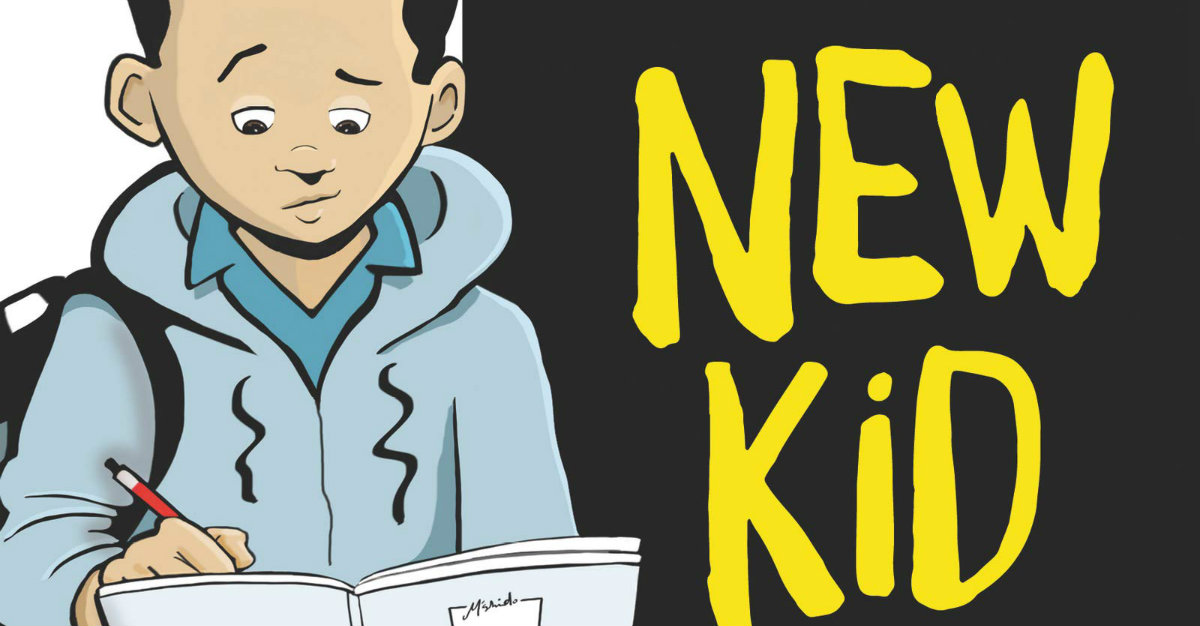Earlier this week, the American Library Association awarded the Newbery Medal for most outstanding contribution to children’s literature to New Kid by Jerry Craft. Craft’s story focuses on a young African American boy named Jordan Banks whose parents enroll him in a prestigious private school where Jordan is one of the few students of color. Adding to the tension is the fact that Jordan desperately wants to study art. Sadly, this is largely overlooked at his new school. Along with its Newbery prize the book claimed a prestigious Coretta Scott King Award, which celebrates children’s books produced by African Americans. These would certainly be enough to earn New Kid a spot on any summer reading list, but there’s one final detail about New Kid that’s worth noting: it’s a graphic novel.
This is the first time a graphic novel has ever been awarded a Newbery Medal!
Everyone Has A Story…
As educators, we understand the value of diverse reading in our classrooms. Books with positive minority representation do more than simply build reader confidence. They allow children to develop empathy. Students who would normally never know the values or traditions of their different classmates can learn to connect through stories. Not to mention that getting some students to read AT ALL is a huge victory!
Unfortunately, many teachers can end up handicapping themselves in their attempts to create a diverse student library. We’ll pride ourselves on possessing books by minority authors or with minority characters but fail to realize our students are connecting with none of them! That’s because the biggest challenge facing many ELA students today is not a lack of diverse material, but rather a lack of depth.
…and It’s Not Always the One You Think
Jerry Craft actually highlights this very problem in New Kid. During one amusing scene, a well-meaning librarian offers two students different books for them to read. The African American boy is given a gritty novel about a fatherless black teen growing up in poverty, while his Caucasian friend receives a fantasy book about a white protagonist who discovers he’s a magical “chosen one” destined to save a princess. The scene ends with the first boy returning his book and explaining that his father is the CEO of a Fortune 500 company. Just because a novel is considered diverse does not mean it reflects your student’s life experiences.
Just Remember
We of all people should know the difference between understanding a concept and executing it correctly. Stories about racism, coming out, and female empowerment are important, but we should never use them to define our students. If we pigeonhole their stories, we’ll end up constricting their personal growth as well. Here are just a few things to remember:
- Good Books Go Deep: A character shouldn’t be defined solely by their race, religion, or background. These things are important and can play a role in their story, but students are looking for a protagonist who is real. Seek out books featuring complex characters with a variety of interests, talents, and personalities.
- Graphic Novels Are Literature: If New Kid teaches us anything it’s that comics can be great literature. In fact, graphic novels have been shown to improve student vocabulary, increase interest in reading, and develop social-emotional learning. Don’t let the bright colors fool you, it’s worth keeping a few of these in your classroom!
- ABR (Always Be Reading!): Why should your students be the only ones reading? Take this opportunity to expand your own book collection. Discover a new story by an author from a different background than yourself. Maybe even dip your toe into the world of comics. The best way to recommend books for your classroom is to have read them yourself. And who knows, you may even learn something!
(P.S. – If you’re looking for books your students might enjoy, consider New Kid by Jerry Craft, Green Lantern: Legacy by Minh Le and Andie Tong, Aristotle and Dante Discover the Secrets of the Universe by Benjamin Alire Saenz, and Dealing with Dragons by Patrica C. Wrede.)

